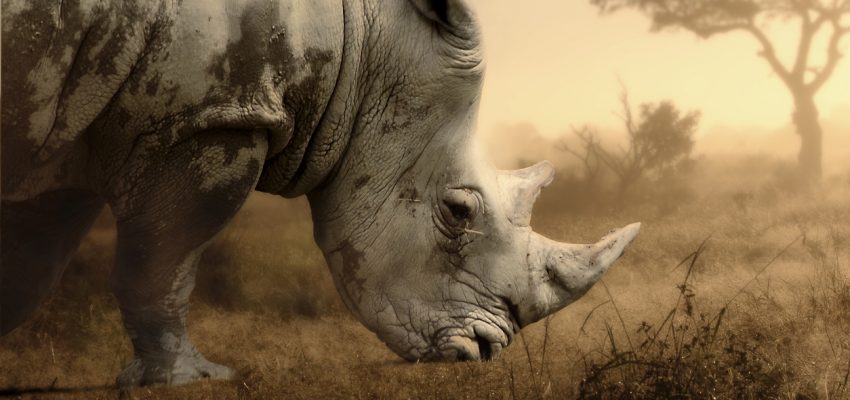In March, the last Northern White Rhino died in Kenya of old age. Named “Sudan” after his country of birth, he was 45 when he died. While extinctions are commonplace in the dwindling natural world, we do feel a deep sense of loss and sadness for those species we have a special bond with.
I grew up in Africa where rhinos were part of almost every holiday I had as a child. We would all pile in the car and head for one of the many parks and reserves spread around my native South Africa. Spotting animals had a real currency—you got a candy for giraffe, cheetahs and lions, but a rhino or a leopard would score an ice cream so I became a rhino-spotting wizard.
Northern white rhinos used to populate a wide region of Central Africa including Chad, Uganda, Sudan, the Central African Republic and the Democratic Republic of the Congo. As a rhino sub-species, they have been fighting extinction for a long time. In 1960, there was just 2,000 of them left in the wild, a number that dwindled to zero only a couple of decades later.
How are the Other Rhino Sub-species Doing?
At the beginning of the last century, 500,000 rhinos roamed Africa and Asia. Today, there are only 30,000 rhinos left in the world. South Africa is home to the largest population of rhinos but they lose 1,000 every year to poaching according to WildAid.
“Sadly, human activities including hunting, poaching, habitat destruction and war has hugely impacted rhino populations with some species left on the brink of extinction,” says Rob Brandford, Executive Director of the David Sheldrick Wildlife Trust (DSWT). “For rhinos in Africa, rhino horn poaching is the main threat facing rhinos as demand has escalated in Asian countries, especially in Vietnam. Despite having no proven medicinal value and made of keratin, rhino horn has long been used in traditional medicines but in recent years, it has been incorrectly touted as a cure for ailments ranging from hangovers to treatment for cancer as well as status symbol.”
The DSWT is based in Kenya where only 1,149 rhinos remain: “Working in partnership with the Kenya Wildlife Service across our field projects including our Veterinary initiative, the DSWT/KWS five Mobile Vet Units have attended to 450 rhinos to date. Their work ensures injured individuals can go on to lead lives in the wild. Through our Orphans Project, the DSWT also rescues orphaned milk-dependent rhinos, hand raising them and reintegrating them back into the wild. We have successfully hand raised 16 orphaned rhinos,” says Brandford. DSWT secures habitats through electrified perimeter fences, de-snaring teams and AirWing patrol over rhino safe havens in Kenya, monitoring the population and for any signs of illegal activity.

Endangered species
Make a Donation or Foster a Rhino
“All of our work is dependent on donations which means readers can play a direct role in conserving rhinos by making a donation to our field projects,” says Brandford. “Fostering a rhino is another way to support our efforts and readers can adopt Maxwell, a blind black rhino who lives at our Nairobi Nursery. As a result of this congenital condition, he is unable to return to the wild since he won’t be able to size up his opponents for territorial disputes – a key part of male rhino behaviour – and as such, Maxwell will have a forever home at our Nursery.”
Go on Safari
Visiting a nature conservation area where rhinos live not only helps support efforts to save the rhinos, but you also get to enjoy these wonderful creatures in their natural habitats. If you do book a holiday, ensure the tour operator is an ethical and conservation-friendly one.
Volunteer at a Rhino Rescue Facility
Another way to help is to volunteer. Some rhino sanctuaries welcome volunteers who can help hand-rear rhinos, feed the animals and clean out cages, help maintain animal data records and work on park maintenance for the experience of a lifetime.




